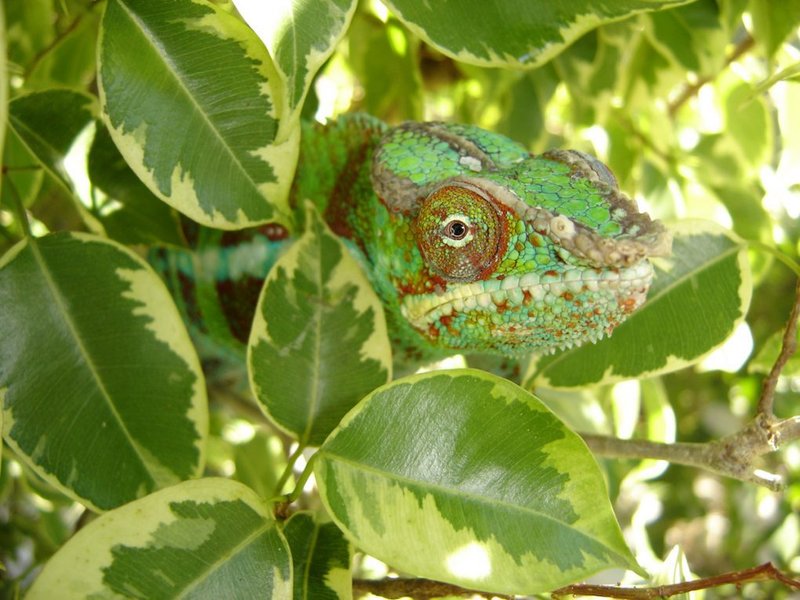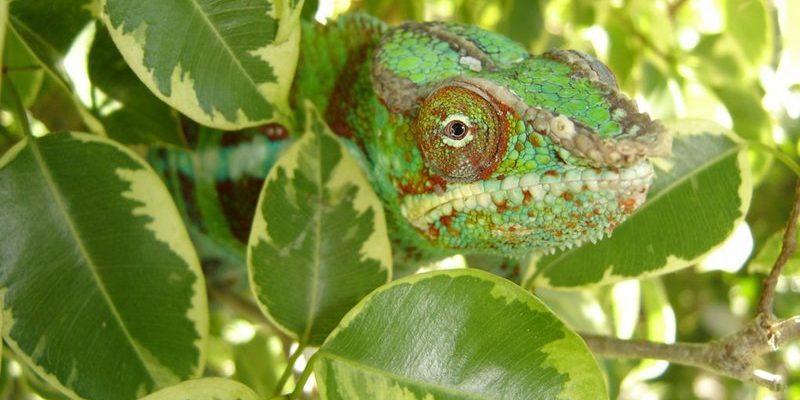
When creating the perfect environment for your Parson’s chameleon, think about incorporating both plants and décor that not only look beautiful but also serve practical purposes. From providing shade to offering climbing opportunities, the right selections can help keep your chameleon stress-free and thriving in its new home. Let’s delve into some of the best plants and décor options to consider, ensuring your scaly friend has a sanctuary that feels just right.
Understanding the Parson’s Chameleon Habitat Needs
Before we jump into plants and décor, it’s essential to understand what makes a habitat suitable for a Parson’s chameleon. These creatures hail from the lush forests of Madagascar, where they thrive in humidity and love to bask in warmth. This means your setup should mimic these elements as closely as possible. Think of it as creating a mini rainforest!
A few key features to consider include temperature gradients, humidity levels, and the types of surfaces where your chameleon can lounge or climb. This reptile loves to bask under UV light, which helps them synthesize vitamin D3. Plus, having a variety of plants can offer plenty of hiding spots—just like a chameleon would find in the wild.
So, how do you create this perfect environment? It starts with selecting the right plants and decorations that cater to both the chameleon’s comfort and your aesthetic preferences.
The Best Plants for a Parson’s Chameleon Habitat
When selecting plants, choose species that not only thrive in humidity but are also safe for your chameleon. Here are a few fantastic options that can enhance their habitat:
- Ficus elastica (Rubber Tree)
- Dracaena species
- pothos
- Peace lilies
These plants are not only attractive but also provide essential cover for your chameleon. The Ficus elastica, for example, has broad leaves that can create shaded areas, while pothos can grow long vines, giving your chameleon a place to explore.
You might be wondering how to integrate these plants into your setup. Ideally, you want a mix of tall and short plants to create levels. Tall plants can provide height, while shorter ones are great for ground cover. This layering adds visual interest and creates a more naturalistic environment.
Plant Placement and Arrangement Tips
Now that you know which plants to choose, let’s talk about where and how to place them. The arrangement is as crucial as the choice of plants. Consider the following tips:
1. Create Climbing Structures: Use branches or vines that can be intertwined with your plants. This will give your chameleon multiple pathways to explore.
2. Use Vertical Space: Parson’s chameleons love to climb, so make use of tall plants or add vertical decorations that mimic tree trunks.
3. Shade and Sunlight: Remember that your habitat needs areas of shade and spots where your chameleon can bask. Place taller plants on one side to block some of the light.
4. Spacing is Key: Leave enough space between plants to avoid overcrowding, which can restrict movement and lead to stress.
Taking the time to thoughtfully arrange your plants will not only make your chameleon happier but will also create a beautiful display in your home.
Decorative Elements to Enhance Your Chameleon’s Environment
Adding décor to your chameleon’s habitat can serve both aesthetic and functional purposes. Here are some excellent options:
- Branches and Vines
- Hides
- Water Features
Branches and vines are fantastic for mimicking a natural environment. You can use natural driftwood or bamboo poles to create sturdy climbing spots. These additions will help your chameleon feel more secure and encourage their natural behaviors.
Providing hides is essential, as chameleons often seek out secure spots to relax. You can use coconut shells, stone caves, or even decorative logs. Just make sure they are properly sized for your chameleon and easy to clean.
Finally, think about adding a water feature, like a small drip system, to keep humidity levels up. Chameleons will often drink from moving water, and this can be an attractive addition to their habitat.
Lighting and Temperature Control
You might be wondering about lighting and how it plays into your chameleon’s habitat. Proper lighting is crucial for maintaining a healthy environment.
You’ll need both a basking light and a UVB light. The basking light creates warmth (around 80-90°F in the basking spot), while the UVB light helps your chameleon synthesize vitamin D3. You’ll want to set the basking spot on one side of the habitat and allow for a cooler area on the other side so your chameleon can regulate its body temperature.
Here’s a quick checklist for lighting:
– Basking light: Ensure it’s at the right wattage for your enclosure size.
– UVB light: Position this close enough so your chameleon can benefit without getting too close to burn.
– Timers: Use timers to create a natural day/night cycle.
By ensuring the right lighting and temperature, you create a comfortable environment that allows your chameleon to thrive.
Maintaining Humidity Levels
Humidity is another critical component for your Parson’s chameleon habitat. These creatures need humidity levels between 50-70%. Here’s how to keep things moist:
– Regular Misting: Mist the plants and habitat daily to increase humidity. Remember that chameleons often drink water droplets from leaves.
– Humidity Gauge: Use a hygrometer to monitor humidity levels consistently. This will help you adjust your misting schedule and ensure your chameleon stays comfortable.
– Water Bowl: While chameleons prefer drinking from leaves, having a shallow water bowl can help. Just make sure to clean it regularly to avoid any bacteria buildup.
Staying on top of humidity will make all the difference in your chameleon’s health and happiness.
Choosing the Right Substrate
The substrate you choose is just as important as the plants and decorations. It’s the foundation of your habitat! Here are some options to consider:
- Organic soil
- Cypress mulch
- Reptile carpet
Organic soil provides a natural feel and is excellent for planting live plants. Just make sure it’s free from pesticides. On the other hand, cypress mulch retains humidity well and can make the habitat look more woodsy.
If you’re looking for something easier to clean, reptile carpet could be your best option. It’s simple to maintain and creates a clean surface. Just ensure whatever substrate you use doesn’t pose a risk of ingestion, as chameleons are known to nibble on everything!
Final Thoughts: Creating a Thriving Habitat
Setting up the perfect habitat for your Parson’s chameleon can be a fun and rewarding experience. By choosing the right plants and décor, ensuring proper lighting and humidity, and maintaining appropriate substrate, you provide a home where your chameleon can thrive.
Remember, it’s all about layers and creating a space that mimics their natural environment. So take your time, enjoy the process, and don’t be afraid to experiment a little along the way. Your chameleon will appreciate the effort, and you’ll end up with a beautiful addition to your home!

